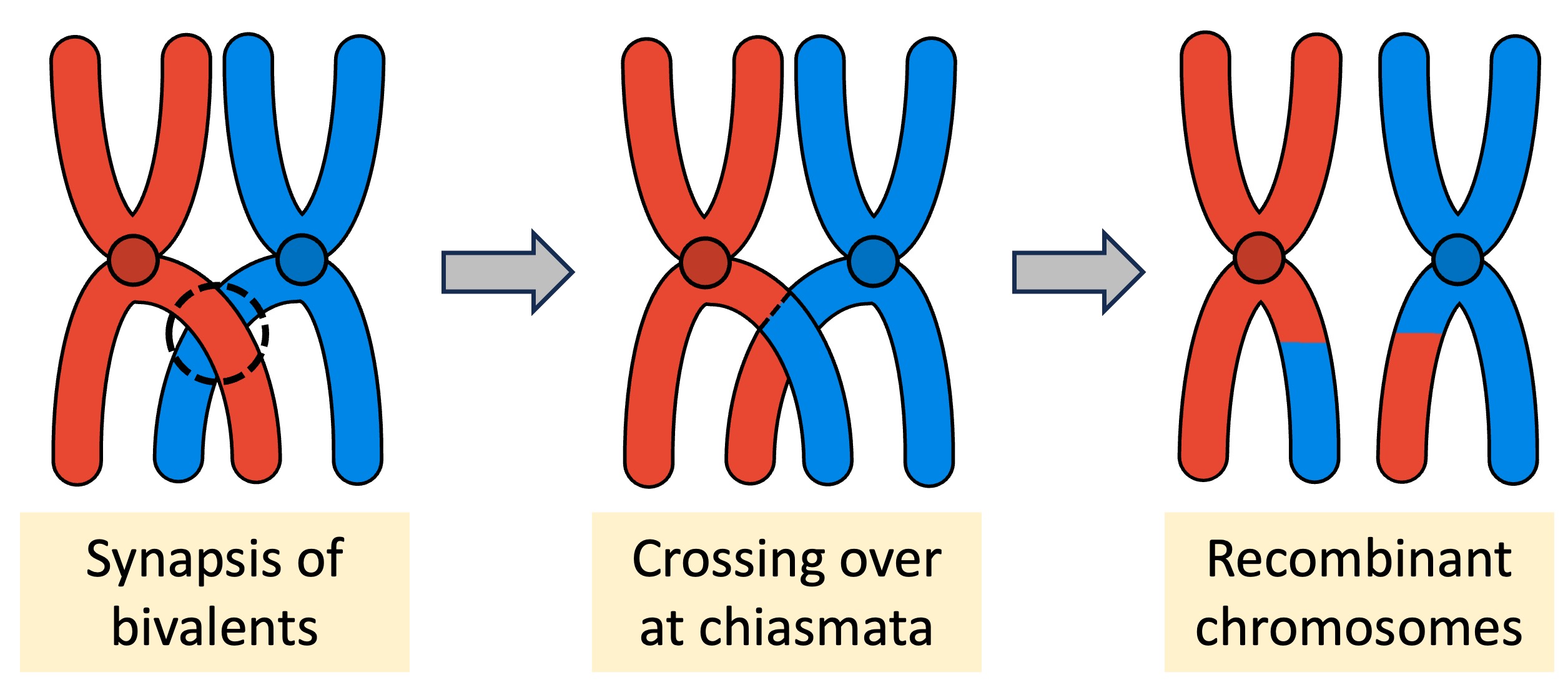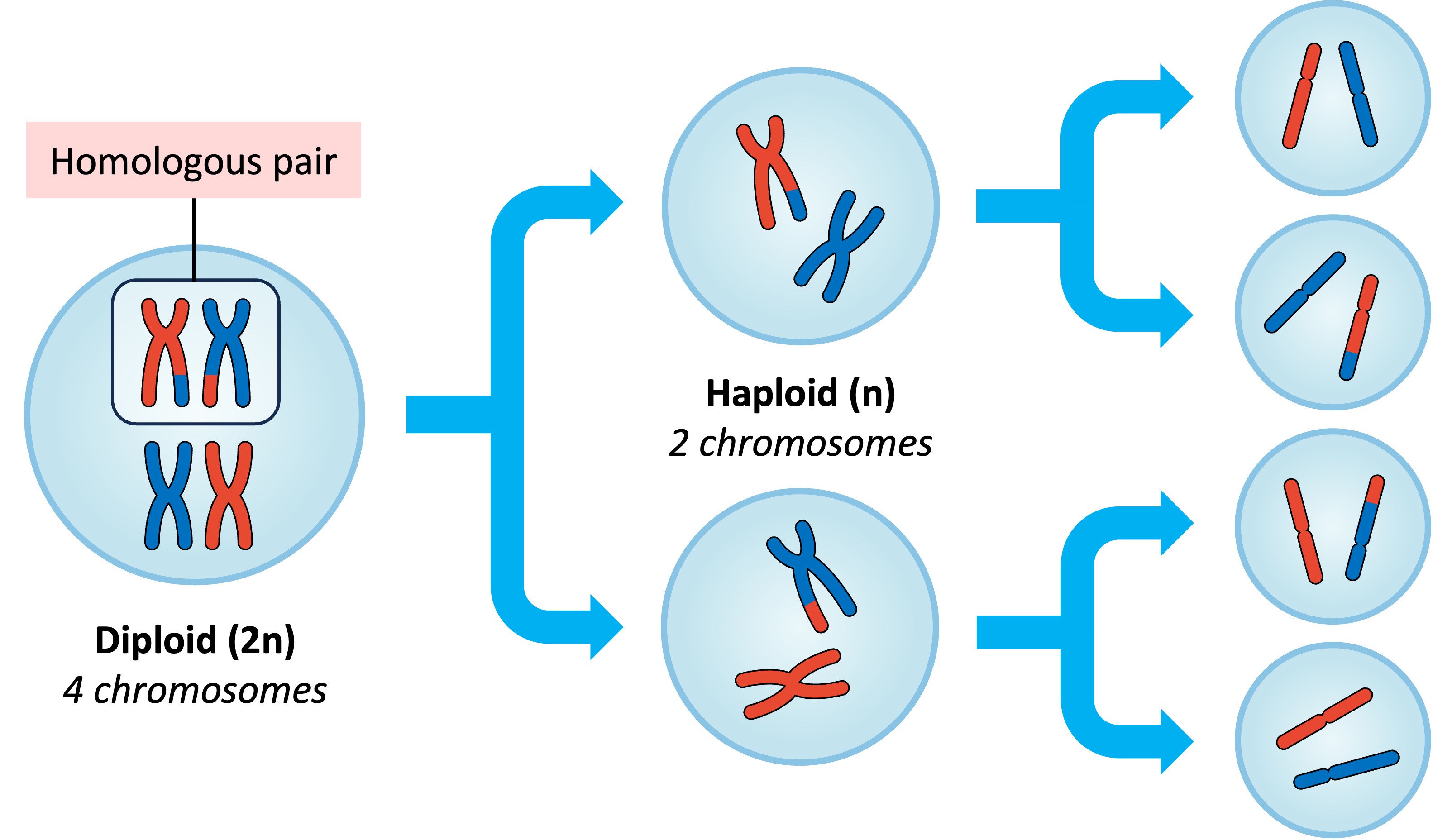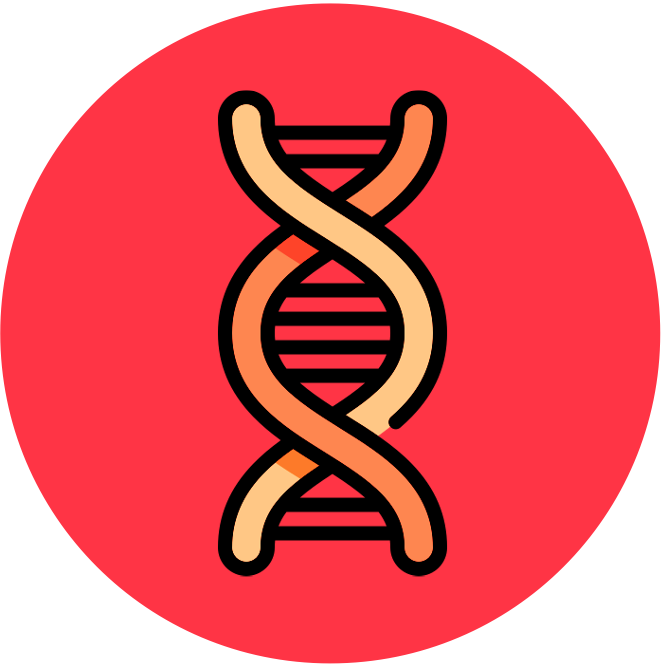

Meiosis
Meiosis is a process consisting of two nuclear divisions in order to produce four genetically distinct nuclei with half the chromosome number
-
The first meiotic division is called the reduction division and halves the chromosome number in each nuclei
-
The second meiotic division proceeds as per a mitotic division and separates the sister chromatids
Reduction Division
Sexually reproducing organisms inherit their DNA from both parents, meaning they have two copies of every chromosome (a maternal copy and a paternal copy)
-
These two copies are called homologous chromosomes and the cell is described as being diploid (‘di’ = two)
The reduction division functions to separate the homologous chromosomes into two separate nuclei – halving the chromosome number
-
The resulting cells are described as being haploid (‘ha’ = half) and will develop into the sex cells (gametes) used in sexual reproduction
-
The reduction division is important as it ensures that when two sex cells are fused together during fertilisation, the resulting offspring will have the same number of chromosomes as the parents
Meiotic Divisions


Meiotic Phases
Both meiotic divisions follow the same basic phases as mitosis – prophase, metaphase, anaphase and telophase
-
Meiosis is also preceded by interphase, during which the DNA is replicated to form sister chromatid chromosomes
-
A second growth phase (called interkinesis) may occur between the two divisions, however no DNA replication occurs in this stage
Meiosis I
The first meiotic division is a reduction division (diploid → haploid) in which homologous chromosomes are separated
-
In prophase I, the homologous chromosomes become connected at points called chiasma (plural = chiasmata) to form bivalents
-
When the bivalents are split apart (during anaphase I), the homologous chromosomes will move to opposite poles of the cell
-
This means that the two chromosome sets formed at the end of the first division only contain one copy from each homologous pair (haploid)
Meiosis II
The second meiotic division functions like a standard mitotic division and separates the sister chromatids
-
Because the chromosome number has already been halved in the first division, all cells produced by meiosis II will be haploid
-
Because meiosis II represents a second round of division, it will result in a sum total of four haploid daughter cells
Overview of Meiosis
Summary of Phases
Meiosis in Fly Cells
One of the primary purposes of meiosis (and sexual reproduction in general) is to promote genetic variation in offspring
-
Meiosis produces genetic variety via two key processes – crossing over (prophase I) and random assortment (metaphase I)
-
Additionally, the random fusion of gametes from parents will further ensure genetic variation between offspring
Crossing Over
During prophase I of meiosis, homologous chromosomes become connected via a process known as synapsis
-
The connected chromosomes are known as a bivalent (bi = two chromosomes) or a tetrad (tetra = four chromatids)
-
While in synapsis, non-sister chromatids may break and recombine with their homologous partner (crossing over)
-
These points of genetic exchange between non-sister chromatids are called chiasmata (singular = chiasma)
When the chromosomes (and chromatids) are separated in the later stages of meiosis, those that have been recombine are called recombinants
-
Recombinants will possess unique combinations of sequences from both parents and so will be genetically different from the original chromosomes
Recombination



Random Assortment
When homologous chromosomes line up as bivalents in metaphase I, their orientation towards the opposing poles is random
-
The orientation of each bivalent occurs independently of one another, meaning different combinations of maternal / paternal chromosomes can be inherited when the homologous chromosomes separate in anaphase I
The total number of chromosome combinations that can occur in gametes is 2n – where n represents the haploid number of chromosomes
-
Humans have 46 chromosomes (n = 23) and thus can produce 8,388,608 different gametes (223) by random assortment
-
If crossing over also occurs between homologous chromosomes, the number of different gamete combinations becomes immeasurable
Random Assortment (n = 2)








